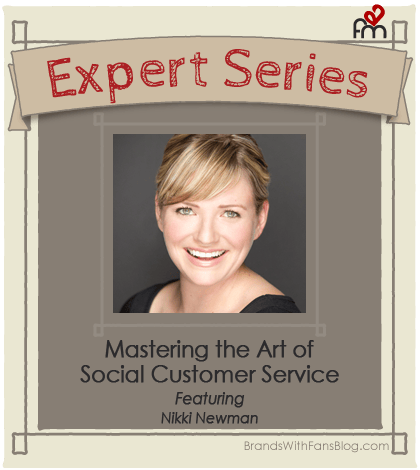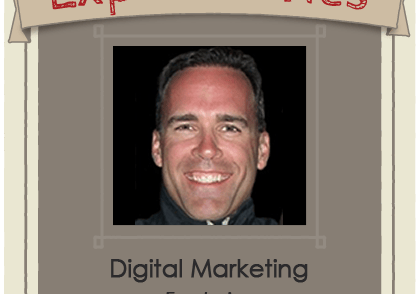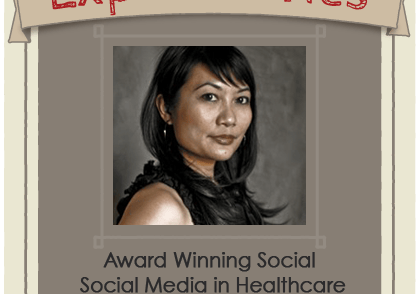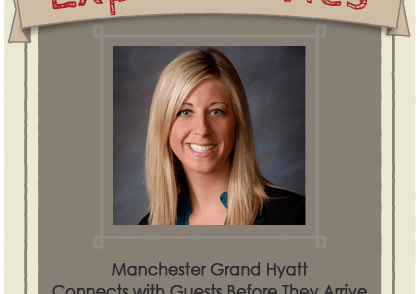The saying goes that Whole Foods Market isn’t just a grocery store, but a lifestyle. And Nikki Newman knows exactly what it means and just how important it is to tap into that lifestyle via social and connect the brand to its consumers. Nikki was brought on to specifically focus on social customer service. She is now two years into her position as the social media community moderator and has grown the moderation program at Whole Foods to include 24/7 coverage. We are happy to have her contributing her vibrant spirit and social media customer service expertise in this month’s expert series.
BWF: How do you use social media for customer service?
I think the worst thing you could be doing, as a brand, is not addressing customer issues on social media.
NN: Social is a valuable outlet that customers are using to voice their feedback and it isn’t going anywhere. I think the worst thing you could be doing, as a brand, is not addressing customer issues on social media.
We have a lot of executive buy-in at our office and, luckily, they understand the power of social. You can’t escape it. It’s on every commercial and the hashtag is everywhere.
Social customer service, at the brand level, is just another method of service for our customers. So of course, we’re going to be online. It really is as valuable as in-store customer service.
Transparency is a huge priority for us. We need to let our customers know that we’re listening. We might not have the response they are looking for, but we want them to know we are here. Social customer service can often quickly diffuse a negative situation. We then might see a retweet saying, “Wow! They actually responded!”
BWF: What does your social program look like?
With around 1.5 million fans on Facebook and around 3.6 million on Twitter, I knew it was too much for one person to handle.
NN: I have five team members from around the stores in the Austin area that work with me one day a week and help moderate. When I started in this position, I was like, “Hey! You know what? I know a lot of customer service all-stars downstairs and I want them to come upstairs to work with me on social customer service.
With around 1.5 million fans on Facebook and around 3.6 million on Twitter, I knew it was too much for one person to handle.
My team is responsible for the national accounts and that’s mainly what we moderate. But a lot of times we play mediator between our store accounts because company-wide, we have 850+ social media accounts.
BWF: Do each of your stores handle their own local social media?
We can’t exactly tell the stores what they need to be doing, rather just encourage them and give them the tools to be successful individually.
NN: Yes! Our office is called Global Support because we are a decentralized company. It’s a very bottom up organization.
We developed a structure for social and cleaned it up by creating training guidelines and communicating the brand’s social tone and overall social strategy. We can’t exactly tell the stores what they need to be doing, rather just encourage them and give them the tools to be successful individually. We do encourage our local stores to be on Facebook and Twitter. A lot of stores also do Instagram.
We have some cities that are rolled up into metro accounts. New York is a good example, because if you’re shopping in Manhattan, you’re probably shopping at a lot of different stores. We have a lot of Metro accounts for people who cross-shop in bigger cities. But other than that, each store can choose what they want to do and we support them along the way.
BWF: How does your brand build its online community?
By letting the customers help in the decision-making, you are showing them that their opinion is valuable.
NN: As far as building community at the local level, we encourage our individual stores to go out and join the conversation happening in their community. A lot of times, especially when we open new stores, we’ll encourage the local accounts to open their page to begin building an online community well before the store actually opens.
We also do a lot of collaborations with local nonprofits. We do a 5 percent day for certain charities in local communities. The local accounts can crowdsource for charity suggestions the community would like to see get the 5 percent day money. By letting the customers help in the decision-making, we are showing them that their opinion is valuable to us.
The brand channels are different from the local channels. From the brand, we speak more about lifestyle versus the store level speaking more to their specific community. We try to follow the conversation wherever it is going on.
“By letting customers help in the decision-making, you’re showing them that their opinion is valuable.” ~@newmanikki http://t.co/35VxLTRHj5
— Fandom Marketing (@FandomMarketing) July 22, 2014
BWF: How does social customer service work with “traditional” customer service?
Social is just another method for customers to get in touch.
NN: Our customer information team handles phone, email, faxes and handwritten letters. Yes – we still get faxes and handwritten letters.
Essentially, we’re on different teams within the structure of our overall communications team, but we work side-by-side because a lot of times, if a customer doesn’t get a response to the email they sent or phone message they left, they’ll start reaching out to us on social or vice-versa.
Social is just another method for customers to get in touch. And if you’re not out there responding to people, then the customer takes it into their own hands and then it can get magnified. You might as well nip it in the bud when it happens, be transparent and help them.
BWF: Do you use user-generated content and, if so, how do you use it?
Fans like seeing their images being used.
NN: User-generated content is definitely the next avenue we’re exploring as far as another way to build community and show our users that we are paying attention. We want them to know we are looking at the content they’re tagging us in and we appreciate them taking the time to do it.
We’ve already done campaigns with certain contests for user content. Last year, we did an Earth Month contest. It was a month-long contest and we used a specific hashtag and we had all of the images pulled into our website. Then it was built into a display. Fans like seeing their images being used. They’re like, “That’s my picture on the Whole Foods website!”
We also started using more user-generated content on our Instagram account. We have a few collaborators now but we want to expand into our followers and start using their content.
BWF: How do you measure success and what tools are you using?
Everyone that works in social media understands there are a bazillion analytics tools.
NN: We’re working with a company called WCG for our overall analytics. They find out what’s working and what’s not. They look at basic social analytics as far as shares, likes and comments.
We also use Google Analytics to understand where the traffic is coming from to our website. A gentleman on our team pulls numbers every once in a while to see how well we are performing driving traffic from social to the site.
With social customer service we are very interested in response time, so we use a tool called Simply Measured and it gives the response rate to customer service issues. They can even label the seriousness or escalation process of social interaction. We look at how many replies we send based on our overall conversation.
We’re tagged in a lot of content too, so we have our overall number of mentions and we can see how many of those we responded to. We use tagging to see how many of those were actually customer service based and then dig down even more to see how many of them were us playing mediator between a specific store and the customer.
We use Spredfast as our overall social media management tool. They also provide analytics within their tool and you can drill down to anything about a certain post that you submitted. They offer demographics as well.
For our listening tool, which also provides analytics, we use Brandwatch. They get super granular and can give you a topic cloud of what’s happening. Like, what the big topics people are talking about. They drill down to occupation within the demographics, which I think is a great thing.
Finally, we use Curalate, which is mainly for image-based social. They have great analytics for Pinterest and Instagram.
Analytics are especially important to us over the holidays since we offer online ordering during that time. We want to see how many people are going to the site and how long they are staying there. We also want to see if they are actually ordering and getting to the final page. Everyone that works in social media understands there are a bazillion analytics tools.
BWF: What has been your biggest challenge?
Social isn’t just a one-way megaphone, but a two-way communication.
NN: Getting buy-in from our store management at each store’s leadership team can be difficult. We try to explain the value of social to them, but one of our biggest challenges is explaining that social isn’t just a one-way megaphone, but a two-way communication.
BWF: What has been your biggest success?
To have eyes on our channels for 24 hours a day and seven days a week is big.
NN: For me personally, I think the biggest success would be the program that I developed and that we now have 24 hours a day and seven days a week of moderation on our national channels.
To have eyes constantly on our channels is big. Customers are getting quick responses to their issues, which helps de-escalate or correct a situation before it snowballs.
One of our biggest successes as a brand is being on social and watching the conversation. And, as far as our overall company is concerned, we developed a successful social strategy – granted, social is always evolving and changing.
BWF: What one big lesson have you learned that you wish you could teach others?
Don’t just monitor what people are saying. Join in the conversation.
NN: Don’t be scared of social. Don’t think that you shouldn’t be involved in the conversation because the conversation is happening whether you’re on social or not. That’s always been my advice.
Don’t just monitor what people are saying. Join in the conversation. When you don’t you are giving issues room to escalate.
Social is an amazing opportunity to get online and dispel rumors and change the perception of your brand. Be transparent. That would be my one piece of advice and it’s a lesson that we’ve all learned.
“Don’t just monitor what people are saying. Join in the conversation.” ~@newmanikki http://t.co/35VxLTRHj5
— Fandom Marketing (@FandomMarketing) July 22, 2014
Meet Expert: Nikki Newman
 Nikki is the Social Media Community Moderator for Whole Foods Market. She manages a team of social moderators that oversee the engagement and customer service for the national WFM social media channels while providing support for the 850+ metro and local accounts. She has grown the moderation program at Whole Foods Market to include 24/7 coverage.
Nikki is the Social Media Community Moderator for Whole Foods Market. She manages a team of social moderators that oversee the engagement and customer service for the national WFM social media channels while providing support for the 850+ metro and local accounts. She has grown the moderation program at Whole Foods Market to include 24/7 coverage.
Want to be featured next? Fandom is looking for social marketing rock stars to share their stories, case studies, tips and expertise. Check out our blogging guidelines and contact us or tweet us @FandomMarketing today.





1 Comment
[…] Brands With Fans: How Whole Foods Market Uses Social Customer Service to Deliver Value […]